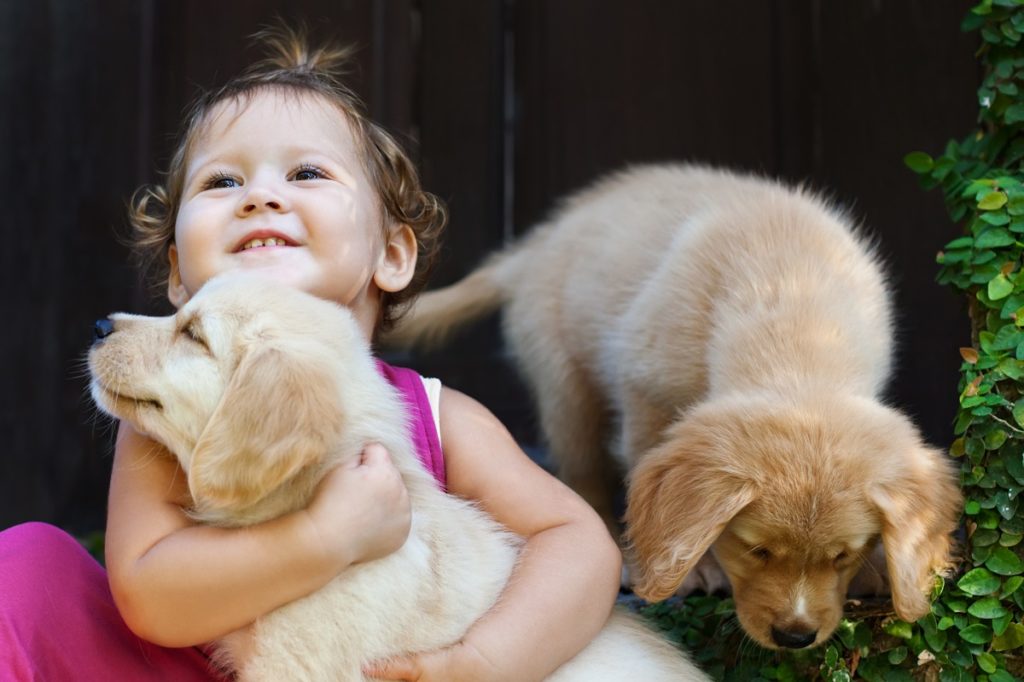Getting a new dog can be very exciting for everyone in the family, especially for your kids. But since kids are just kids, they’ll need proper supervision when it comes to spending time with your new pet. If it’s your first time or your child’s first time interacting with a dog, you need to teach them how to care for and communicate with your dog properly. Your child may not be able to handle the major responsibilities of taking care of a dog. But it’s still important that they’re involved and build a good relationship with them.
It’ll be beneficial not only for your dog. But for your child as well as it’ll make them feel like they’re an important contributor to your dog’s development. Not to mention it is also for the safety of both your dog and child. Based on a report by the American Veterinary Medical Association, 50% of those injured by dogs are children between the ages of 5 to 9. By teaching your child how to interact with your dog properly. You avoid untoward incidents from happening. So here’s what you have to do:
-
Teach them how to use basic commands.
A great way to get your children involved with dog training is by teaching them how to use basic commands on the dog. To teach your dogs basic commands, you might need a few tools to help you. Dog treats play a huge role in dog training. You can also use a clicker, although it isn’t entirely necessary, and you can use cue words instead. With dog treats in your pocket and clicker in hand, all you need is some positive reinforcement. That means every time your dog does the expected behavior you want them to perform, you toss them a treat. Take note that we said “toss” them a treat. Don’t allow your child to hand the treat to your dog directly. We don’t want them to accidentally take a nip at your child’s fingers.
Some basic commands include “sit,” “lay down,” or “down,” “spin,” and “come here.” When it comes to teaching them how to do the action, there are two ways to do it. One way to do it is to “lure” your dog with treats into a certain position while you’re giving them the cue word until they learn to associate that position to the cue word. Or you can opt to do “capturing,” which is when you wait for your dog to do the action themselves and reward them for doing it. Know the basic commands to teach.
-
Get them to help with grooming and everyday care.

You need to teach your child that dogs need to be fed, groomed, and exercised regularly. Grooming is essential, and it may be difficult for you to groom your dog at first. But it’s an essential part of taking care of your dog. To get your child to help with the grooming, you can ask them to help brush the dog’s hair, shampoo, or rinsing off the soap. Don’t expect them to groom the dog alone. Remember, supervision is key. Aside from grooming, everyday care is also important.
You have to teach your child how to feed your dog properly. How much food to give them, get them to wait for their food, and check if they have enough water. You must also teach them not to get angry at the dog, yell at them, or hit them, even if the dog accidentally nips at them. Ask them to tell you right away if such an incident occurs. You must let them know that your dog didn’t mean it and it was just an accident. Teach them not to tease the dog, grab their toy while they’re playing, or take away their food when they aren’t done eating.
When your child learns to respect your dog, your dog will definitely respect them back. If your dog happens to bite your child accidentally, know what you should do.
-
Try different activities.
Depending on your child’s age, there might be certain activities they can’t do with your dog. Here’s a list of fun and appropriate activities your child and dog can take part in, depending on their age:
Six months to two years old:
- Peek-a-boo
- Hide and seek
Three to eight years old:
- Running or walking with a leash
- Fetch
Nine years old and above:
- Dog obedience classes with their dog
- Soccer
- Frisbee
- Fly ball
- Teach more advanced tricks
When trying out these different activities, make sure you’re doing it in a safe space. If your child and dog are running around or throwing things, ensure that your home has some boundary, such as a fence or a concrete wall. This will prevent either your dog or child from running into the street and getting into an accident. It’ll also keep your dog from running away if your child happens to let go of their leash accidentally. Oh boy, it can be difficult to chase your dog when they think you’re playing a game.
Remember, your child and dog must form a bond. Not only does it make a living with a dog more fun, but safer as well. Children can be the most vulnerable around dogs if they aren’t taught how to interact and communicate properly.

